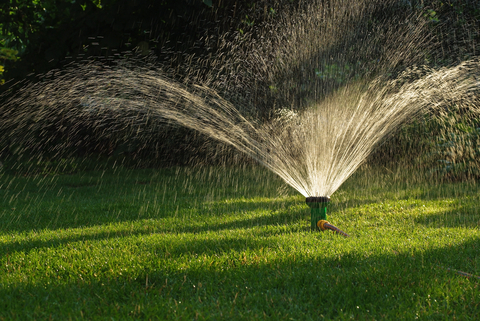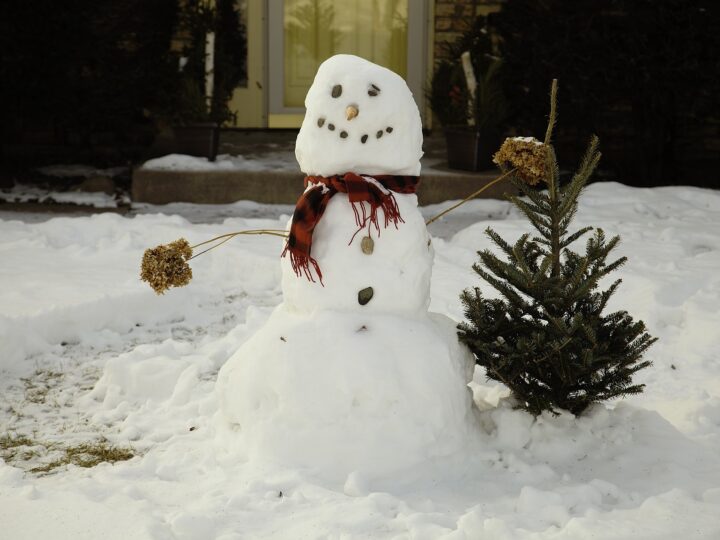
Mowing a lawn is a skill. Whether you use a rotary or a cylinder mower accidents can happen. Perhaps you gave the job to one of your children and they didn’t control the mower successfully. Or perhaps there are faults in your lawn surface that lead to problems. So you need to have some skills in both fixing mistakes and fixing the lawn so they don’t happen again.
Scalping
This is the most common problem in mowing a lawn. No lawn surface is perfectly flat and it only takes a small high spot to have one area cut too short, even exposing the soil. Not only is this unsightly but it leaves an opportunity for weeds to develop in the bare patch.
Scalping is a sign of a high spot, or a low spot causing the mower wheel to drop and scalp the adjacent area. In either case it should be easy to see the cause.
If you have high or low spots big enough to cause scalping then top-dressing or filling the low spots with soil is a poor solution. Never put down so much soil on your lawn that it buries the grass, so usually a 1 cm layer is the most you can apply.
A much better solution is to take a turfing-iron or a flat spade and lift the offending area, making sure you cut a fairly thick slice to preserve the roots.
Remove or add soil to correct the irregularity and re-lay the turf. Water it well, especially if the weather is warm.
If you have a lot of irregularities it may be slow and difficult to correct them this way. In that case it is possible instead to top-dress several times, one centimetre at a time, to raise the low areas. Allow the grass to re-establish itself well before adding the next layer of soil.
Another cause of scalping is having paths and edging strips set too low. Be careful when installing walks to get the level right. Remember that hard surfaces meeting a lawn should be laid level with the soil of the lawn, not the level of the top of the cut grass. If the walk has sunk, the only solution is to lift the materials, raise the level and then re-lay the walkway.
Chopped Edges
Nothing is more attractive, especially in a garden designed in the traditional style, than nicely cut, smooth lawn edges to your beds. Although various edging materials can be installed as mower-strips, these still require trimming and lack the visual grace of lawns flowing right up to the beds.
However these cut edges take work. In addition to re-cutting them at least a couple of times a year, they need regular trimming. So when mowing the lawn one is always tempted to get as close as possible to the edge to reduce the amount of trimming needed. Inevitably the wheel will sometimes fall into the bed, removing a chunk of turf.
Some gardeners then take their edging-iron and re-cut the edge to hide this. Now that may work on a curved edge but not of course where you have a straight one. In any case, re-cutting expands the bed into the lawn which is always something to try to avoid when cutting edges.
The solution is a gardener’s trick called turning the edge. Take a straight spade and cut out a rectangle or square containing the damage section. Be careful to cut the side parallel to the bed at the same angle as the edge is. Slide the spade under the turf from the bed side, turn it 180o and replace it. The damaged section will now be surrounded on all sides by grass. Fill the space with soil, add some grass-seed, firm down and in a short time the space will have merged into the lawn.
This method can also be used when your beds have encroached too far into the lawn due to re-cutting the edge. This time, move the turf slabs without turning them further into the bed, adding soil below to keep the level. Fill in the space left with soil, seed the open spaces and again, in a short time, the grass will have grown in.
These methods are far more successful than simply fill in in the gaps and seeding them, because having grass on both sides of the newly seeded patch keeps the soil moist and also stops it collapsing into the bed.
Maintaining an immaculate lawn takes some time and a few skills, but the end result is always worth it when you step out with a G&T, Pimm’s or Beer and proudly view the result of your efforts.




